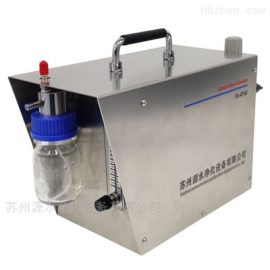Particle Counter: Essential Tool for Air Quality Monitoring

# Particle Counter: Essential Tool for Air Quality Monitoring
In today’s world, where air pollution is a growing concern, monitoring air quality has become more important than ever. One of the most crucial tools in this endeavor is the particle counter. This device plays a vital role in measuring and analyzing the concentration of particles in the air, providing valuable data for environmental assessments and health safety.
## What is a Particle Counter?
A particle counter is an instrument designed to detect and count particles in the air. These particles can range from dust and pollen to more harmful substances like smoke, bacteria, and viruses. The device works by drawing in air samples and using various technologies, such as laser or light scattering, to measure the size and number of particles present.
## Importance in Air Quality Monitoring
Air quality monitoring is essential for protecting public health and the environment. Particle counters are indispensable in this process because they provide precise measurements of particulate matter (PM), which is a key indicator of air pollution. By tracking PM levels, authorities can identify pollution sources, assess the effectiveness of air quality regulations, and issue health advisories when necessary.
### Types of Particle Counters
There are several types of particle counters available, each suited for different applications:
– **Portable Particle Counters**: These are handheld devices ideal for on-the-spot measurements and fieldwork.
– **Desktop Particle Counters**: These are more robust and are often used in laboratories and industrial settings.
– **Continuous Air Monitors**: These devices provide real-time data and are commonly used in environments where constant monitoring is required.
## Applications of Particle Counters
Particle counters are used in a variety of settings, including:
– **Indoor Air Quality Assessment**: Ensuring that indoor environments, such as offices, schools, and homes, are free from harmful particles.
– **Industrial Hygiene**: Monitoring air quality in workplaces to protect workers from exposure to hazardous particles.
– **Environmental Monitoring**: Tracking air pollution levels in urban and rural areas to inform policy and public health decisions.
– **Healthcare Facilities**: Maintaining clean air in hospitals and clinics to prevent the spread of airborne diseases.
## Choosing the Right Particle Counter
When selecting a particle counter, consider the following factors:
– **Measurement Range**: Ensure the device can detect the size and concentration of particles relevant to your needs.
– **Accuracy and Precision**: Look for instruments with high accuracy and repeatability for reliable data.
– **Ease of Use**: Choose a device that is user-friendly and comes with clear instructions.
– **Data Logging and Connectivity**: Opt for models that offer data storage and connectivity options for easy analysis and reporting.
## Conclusion
Particle counters are essential tools for air quality monitoring, providing critical data that helps protect public health and the environment. Whether you’re assessing indoor air quality, monitoring industrial hygiene, or tracking environmental pollution, a reliable particle counter is indispensable. By understanding the different types and applications of these devices, you can make informed decisions to ensure clean and safe air for everyone.
Keyword: particle counter



